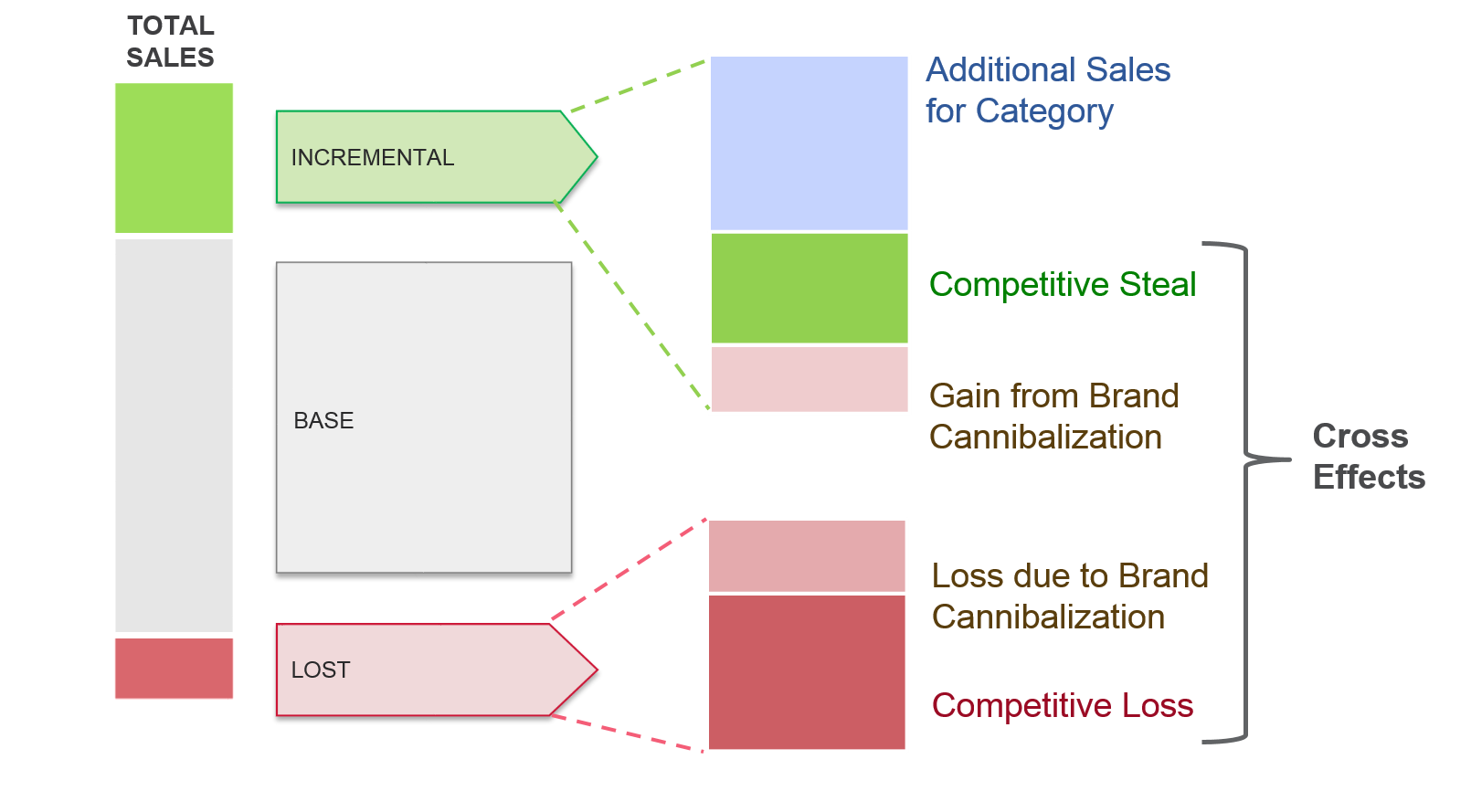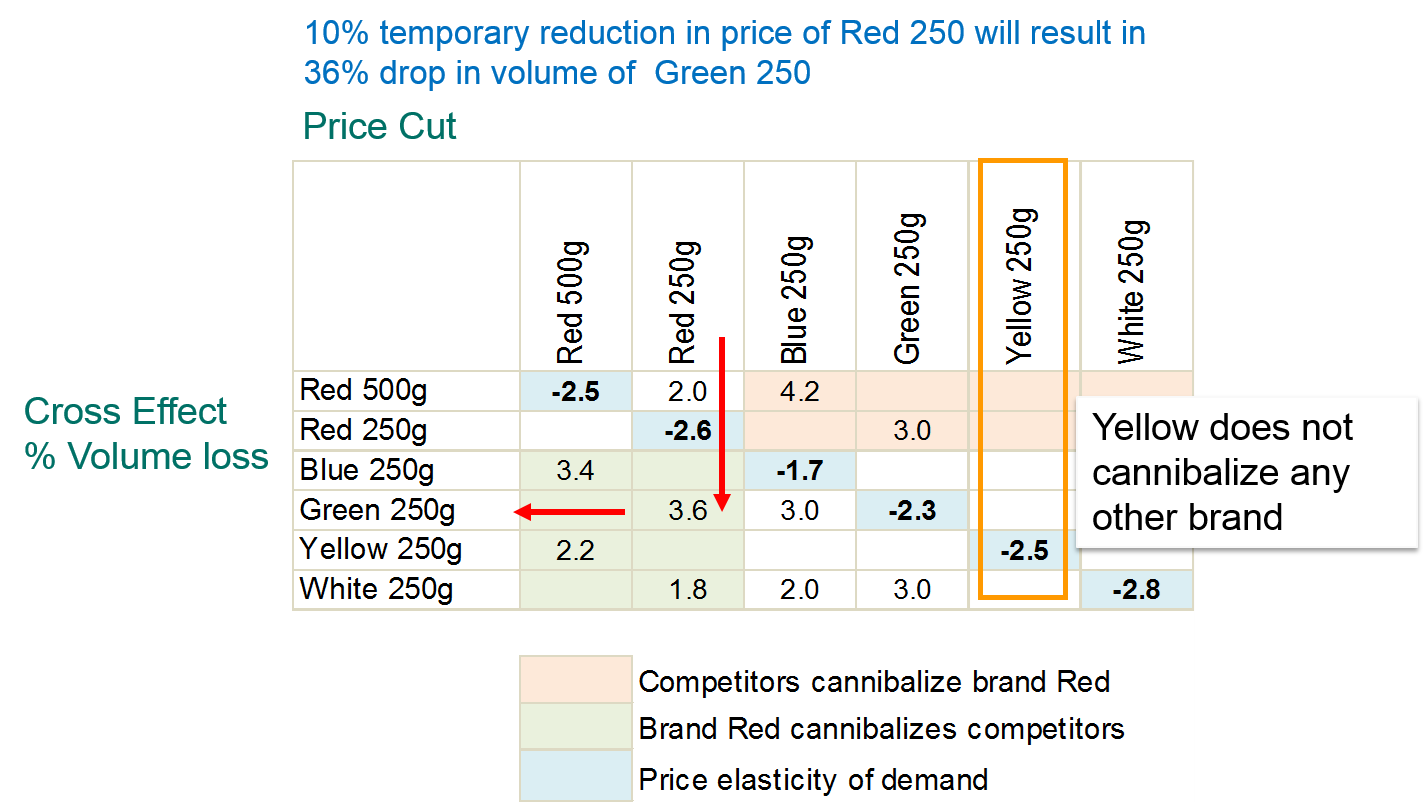
Exhibit 36.12 Cannibalization: Source of gains and losses.
In a competitive environment, the
demand for a product is not only a function of what the product has to offer,
but also a function of what competitors’ products have to offer. The source of
an item’s gains and losses, as depicted in Exhibit 36.12, are largely the result
of consumers shifting volume to and from other items, including those items belonging
to the same brand.
When a product drops price, increases advertising, improves
product quality or expands distribution, it cannibalizes competing products. Cross
elasticity of demand is the measure for these competitive effects. It
determines the responsiveness in the sales of one product when a change in
marketing effort takes place in a competing product.
Cross Price Elasticity, Cross Discount Elasticity

Exhibit 36.13 Discount elasticity and cross discount elasticity.
When evaluating the impact
of marketing efforts, it is important not only to consider the elasticity of
demand, but also the cross elasticity of demand.
Manufacturers do not want to implement initiatives that simply cannibalize their
own brands, resulting in a shift in sales from one product to another within their
own portfolio, without a corresponding increase in overall sales or profits.
Cross price elasticity (cross discount elasticity)
is a measure of the responsiveness of sales quantity of a product to a
(temporary) change in price of another product:
$$ \epsilon_{A,B}=\frac{\%\,change\,in\,quantity\,of\,product\,A}{\%\,change\,in\,price\,of\,product\,B}
= \frac{dQ_A/Q_A}{dP_B/P_B} = \frac{P_B}{Q_A} \frac{dQ_A}{dP_B} $$
Exhibit 36.13 depicts a cross discount elasticity
analysis. It tells us that a 10% discount in the price of item Red 250 gm
results in a 36% drop in the sales volume of item Green 250 gm.
Note that Red 250 gm also cannibalizes Red 500 gm.
On the other hand, when Red 500 gm is promoted, it does not cannibalize Red 250
gm. Instead, it steals share from Blue 250 gm and Yellow 250 gm. The
manufacturer of Red should therefore consider promoting Red 500 gm more often
than Red 250 gm.
From the retail chain’s perspective, it is
beneficial to frequently promote Yellow 250 gm. Since the brand does not
cannibalize other items, category sales, within the chain, will increase when
it is promoted.